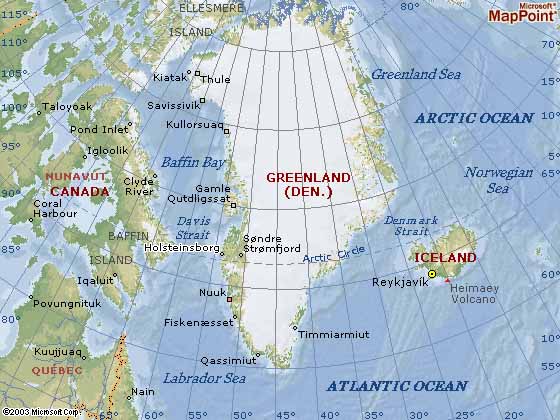

Greenland is, by area, the world's largest island that is not a continent. It is the least densely populated dependency or country in the world. It has been inhabited, though not continuously, by indigenous peoples since 2500 BC. There were Norse colonies in Greenland from AD 986 until sometime most likely in the 15th century. In the early 18th century contact between Scandinavia and Greenland was re-established and Denmark established rule over Greenland. The majority of Greenland, is less than 1,500 metres (4,921 ft) in elevation.
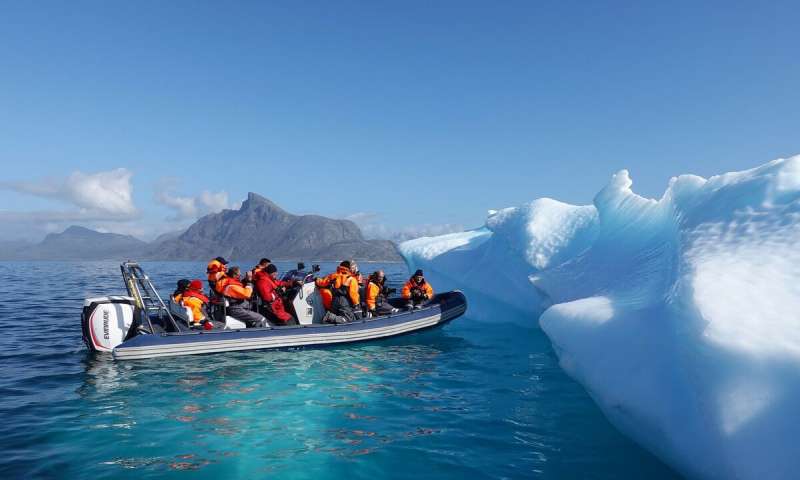
The weight of the massive Greenland ice sheet has depressed the central land area to form a basin lying more than 300 m (984 ft) below sea level The ice flows generally to the coast from the center of the island. All towns and settlements of Greenland are situated along the ice-free coast, with the population being concentrated along the west coast.
If the Greenland ice sheet were to melt away completely, the world's sea level would rise by more than 7 m (23 feet). Today the glaciers of Greenland are contributing to a rise in the global sea level at a faster rate than was previously believed. Read more

The mask and the area in which it was found took me to The Place Where the Tigris and Euphrates Rivers Meet - the first landing place of the Anunnaki when Earth was terraformed.

The Thule Society is a throwback to secret societies circa WWII Germany, Hitler, the Vril Society, UFOs and aliens, Greenland and Trump ... It's all connected.
Exclusive: Incredible UAP (UFO) video captured in Greenland News Nation - June 4, 2025
Ross Coulthart in Australia, is joined by UFO researcher Martin Kleist from Denmark who shares footage of a UAP taken in Greenland as he and colleagues research the topic there over several trips. Kleist takes us back to the days humans observing UFOs felt a spiritual connection. Also discussed is Trump's interests in Greenland. Rare Earth Minerals takes us to Zecharia Sitchin and Anunnaki connections.
What are rare earth minerals, and why are they central to Trump's trade war? CNN - June 3, 2025
The US trade war with China has a major sticking point: rare earths minerals. Last month, President Trump said the United States needed Greenland very badly, renewing his threat to annex the Danish territory. Greenland is a resource-rich island with a plentiful supply of critical minerals, a category that also includes rare earths elements, under its ice sheet. Trump also signed a 'rare earth deal' with Ukraine.
A Greenland Glacier Is Cracking Open - and Scientists Are Watching It Drain in Real Time SciTech Daily - December 29, 2025
Repeated, rapid drainages from a meltwater lake on Greenland's 79°N Glacier are exposing how warming-driven fractures and hidden channels may be pushing the glacier into an unfamiliar and potentially unstable state.
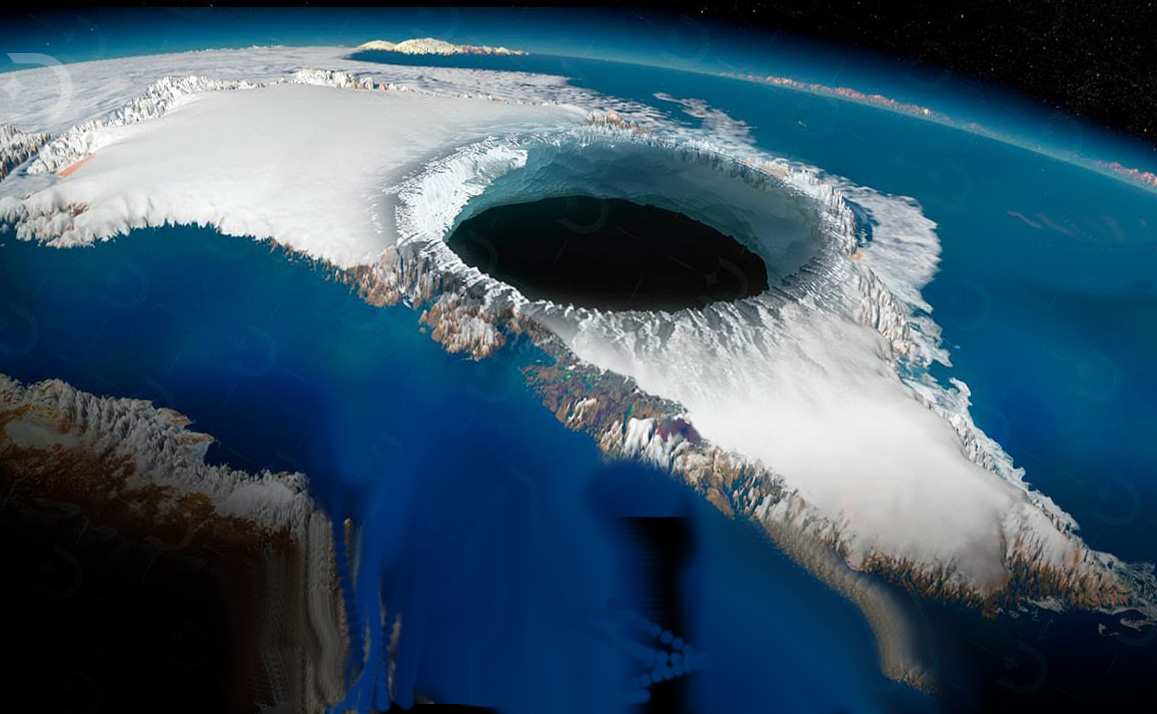
A reserve of natural gas bubbling from a cage of ice discovered on the ocean floor to the west of Greenland may be the deepest gas hydrate cold seep on record, and it happens to be teeming with animal life. Science Alert - December 29, 2025
The Freya gas hydrate mounds were discovered during the Ocean Census Arctic Deep EXTREME24 expedition, led by researchers from UiT The Arctic University of Norway and other partners. A water column gas flare alerted the researchers to unusual activity deep below their ship, prompting them to send a remotely operated vehicle (ROV) to investigate.
Sled dog DNA reveals hidden chapter in Greenland's history PhysOrg - August 24, 2025
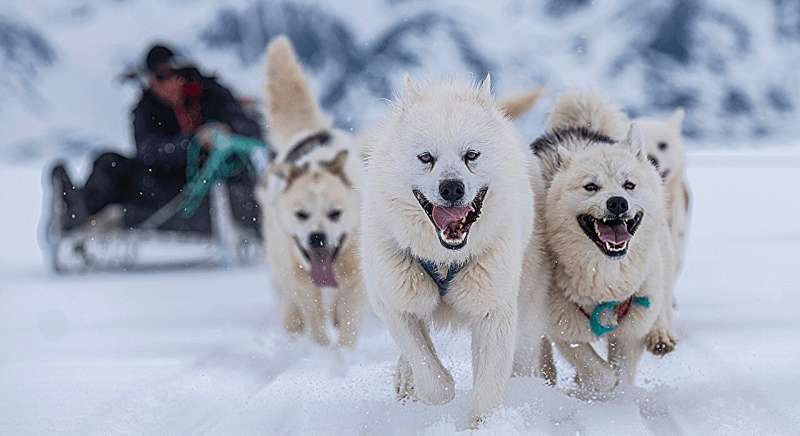
The Inuit arrived in Greenland several hundred years earlier than previously believed, according to a study that mapped the genetics of sled dogs. The Inuit arrived in Greenland several hundred years earlier than previously believed, according to a study that mapped the genetics of sled dogs.
Greenland's glacial runoff is powering explosions of ocean life Science Daily - August 18, 2025
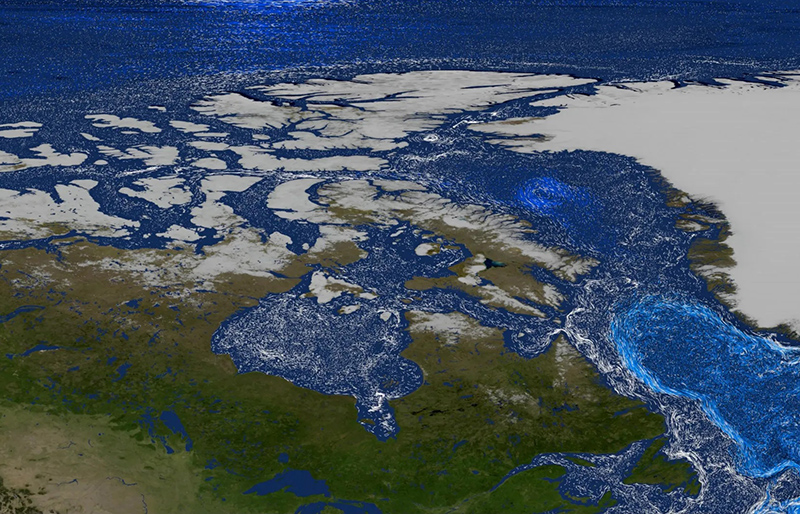
Runoff from Greenland's ice sheet is kicking nutrients up from the ocean depths and boosting phytoplankton growth, a new NASA-supported study has found.
'Hot Blob' Heading For New York Following Ancient Greenland Rift. A vast blob of hot rock moving slowly beneath the Appalachian Mountains in the northeastern US is now thought to be the result of a divorce between Greenland and Canada some 80 million years ago. Science Alert - August 5, 2025

A vast blob of hot rock moving slowly beneath the Appalachian Mountains in the northeastern US is now thought to be the result of a divorce between Greenland and Canada some 80 million years ago. A study by an international team of researchers challenges the existing consensus in both geographical and chronological terms. It was previously thought the breaking up of the North American and African continents was responsible, some 180 million years ago.
Greenland and Iceland saw record heat in May. What does that mean for the world? PhysOrg - June 11, 2025
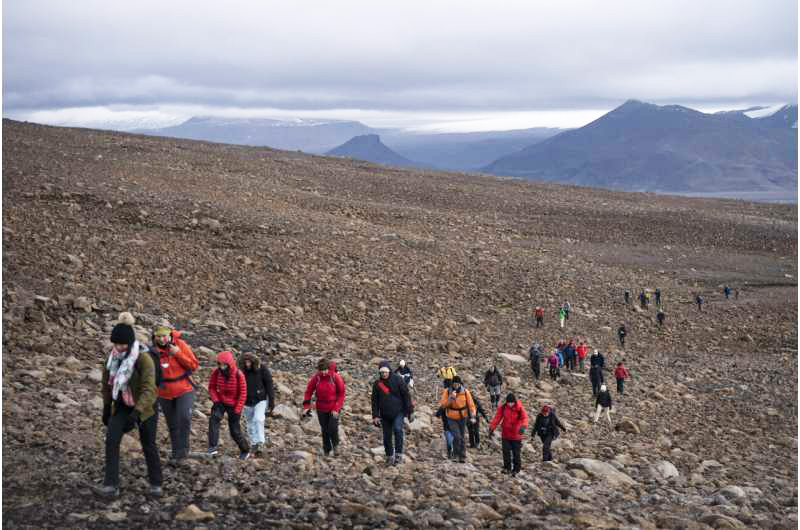
The Greenland ice sheet melted many times faster than normal during the heat wave, according to the analysis by World Weather Attribution, with at least two communities seeing record temperatures for May. Parts of Iceland saw temperatures more than 10°C (18°F) above average, and the country set a record for its warmest temperature in May when Egilsstadir Airport hit 26.6°C (79.9°F) on May 15. The findings come as global leaders put more focus on Greenland, a semi-autonomous territory of Denmark, following U.S. President Donald Trump's comments that he would like to annex the mineral-rich island.
Greenland's melting ice caps reveal the true extent of climate change PhysOrg - June 3, 2025

Understanding the current dynamics of ice loss and glacier retreat requires a long-term view. This means drawing a line between the changes happening now and the climatic and environmental conditions of thousands of years ago. We can reconstruct these past dynamics with information from various sources, such as cores extracted from the ice sheet, or by dating the rocks transported and deposited by ancient glaciers. Sediments accumulated in Arctic lakes also provide valuable data for identifying natural and anthropogenic (human-caused) climate variations over time.
Greenland: In September 2023, Earth rumbled. We've Finally Seen The Skyscraper Tsunami That Shook Earth For 9 Days Science Alert - June 5, 2025

Seismic monitoring all over the globe registered a strange signal that repeated every 90 seconds over a whopping nine days, petering out in a way never before seen. Then the same thing happened a month later. Subsequent analysis of those signals determined that the cause of that trembling was likely a giant megatsunami rocking back and forth, slapping against the sides of a fjord in Greenland - generating a standing wave known as a seiche. Now, scientists have finally actually seen the event, in satellite data captured while the event was in progress. It's the observation needed to confirm that the cause of the seismic signal was indeed a seiche, giving us an answer to the age-old question: if a seiche forms in a Greenland fjord and no one is around to see it, does it shake the planet?
Greenland's mega tsunamis: First direct observation of the trapped waves that shook the world PhysOrg - June 3, 2025
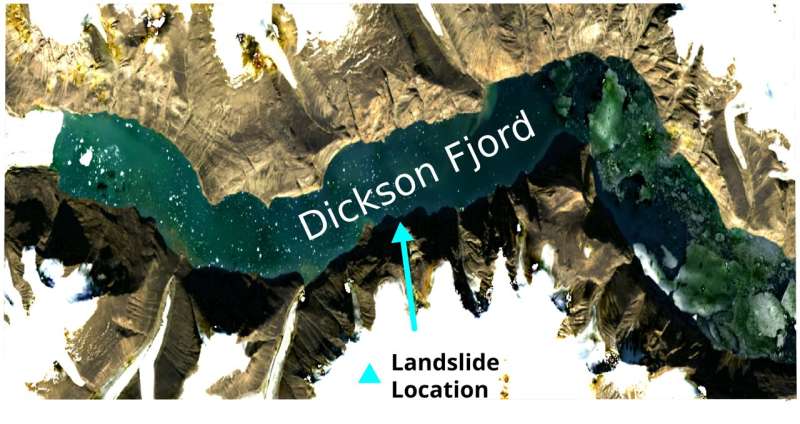
In September 2023, a bizarre global seismic signal was observed which appeared every 90 seconds over nine days - and was then repeated a month later. Almost a year later, two scientific studies proposed that the cause of these seismic anomalies were two mega tsunamis which were triggered in a remote East Greenland fjord by two major landslides which occurred due to warming of an unnamed glacier.
The waves were thought to have become trapped in the fjord system, forming standing waves (or seiches) that undulated back and forth, causing the mystery signals. However, up to now no observations of these seiches existed to confirm this theory. Even a Danish military vessel which visited the fjord three days into the first seismic event did not observe the wave which was shaking Earth. In a new study, Oxford researchers used novel analysis techniques to interpret satellite altimetry data. This measures the height of the Earth's surface (including the ocean) by recording how long it takes for a radar pulse to travel from a satellite to the surface and back again.
Scientists record never-before-seen 'ice quakes' deep inside Greenland's frozen rivers Live Science - February 14, 2025

Similar to earthquakes, ice quakes are seismic events that can happen in ice when it fractures and two slabs grind against each other.
NASA aircraft uncovers site of secret Cold War nuclear missile tunnels - Camp Century - under Greenland ice sheet Space.com - November 26, 2024

Project Icewormsought to use Northern Greenland as a launch site due to its proximity to the Soviet Union and because of the remoteness of the location, according to the 2007 article "The Iceman that Never Came" published in The Scandinavian Journal of History. "The key concept was to deploy the missile force in 'thousands of miles of cut-and-cover tunnels', or rather covered trenches, whose floor would lie 28 feet beneath the surface," the article states.
Meltwater from Greenland and the Arctic is weakening ocean circulation to speed up warming down south, model suggests PhysOrg - November 19, 2024

A vast network of ocean currents nicknamed the "great global ocean conveyor belt" is slowing down. That's a problem because this vital system redistributes heat around the world, influencing both temperatures and rainfall.
Landslide and its resulting megatsunami in a Greenland fjord in September 2023 were significant enough to send waves around the channel of water for an entire week, newly analyzed data collected from seismic monitors has shown Science Alert - August 26, 2024

In what's known as a seiche, a number of smaller oscillations bouncing between shores combined to form standing waves in the partially enclosed body of water. The phenomenon was logged from signals that traveled as far as 5,000 kilometers (3,107 miles) around the globe.
The Oldest Evidence Of DNA Ever Recovered On Earth was Found in Northern Greenland and is Two Million Years Old IFL Science - July 11, 2024
Unearthed in Ice Age sediment in northern Greenland, the genetic material had been locked in permafrost since the Pliocene. Once sequenced, the DNA opened up a window into the past, shedding light on the array of animals and plants that once inhabited the area. These included reindeer, geese, hares, rodents, crabs, and mastodon, as well as poplar, birch, and thuja trees, and a variety of Arctic and boreal shrubs and herbs.
Giant Predatory Worms Dating Back 518 Million Years Found In Northern Greenland IFL Science - January 3, 2024
Ancient predatory worms dating back around 518 million years have been discovered in North Greenland, where a treasure trove of Early Cambrian fossils lay in wait in the Sirius Passet Lagerstatte. The new-to-science animals have been named Timorebestia, Latin for 'terror beasts', and their discovery reveals new insights into a curious group of predatory worms that are still alive today.
Earth's Early Magma Oceans Detected In 3.7 Billion Year-Old Greenland Rocks IFL Science - December 26, 2023
Earth hasn’t always been a blue and green oasis of life in an otherwise inhospitable solar system. During our planet’s first 50 million years, around 4.5 billion years ago, its surface was a hellscape of magma oceans, bubbling and belching with heat from Earth’s interior.
Ancient Soil Found in a Freezer Reveals an Ice-Free Greenland, Hints at Future Risks Science Alert - July 22, 2023

A mile-thick ice sheet in Greenland vanished around 416,000 years ago during a period of moderate natural warming, driving global sea rise to levels that would spell catastrophe for coastal regions today.
Greenland has greener history than previously thought PhysOrg - July 22, 2023
New analysis of samples collected from underneath Greenland's ice sheet reveal the Arctic island was much greener as recently as 416,000 years ago. The findings overturn previous views that Greenland's continental glacier, which covers about 80 percent of the 836,3000-square-mile land mass, has persisted for the last two and a half million years.
The Greenland Ice Sheet Is Getting Close to a Melting Point of No Return Science Alert - April 3, 2023
Scientists are increasingly worried about climate tipping points, where certain thresholds are reached that drive further warming. It's almost like a runaway train heading off a cliff – we're getting near the point where it's too late to put the brakes on.
Ice Sheet Collapse at Both Poles to Start Sooner Than Expected, Study Warns Science Alert - February 27, 2023

Even if we manage to stabilize Earth's temperatures by peaking at 2°C, Greenland's and Antarctica's vast ice sheets are on track for irreversible melting, a new study warns.
Greenland's glaciers are melting 100 times faster than estimated Live Science - December 22, 2022
Scientists are getting a better handle on how fast Greenland's ice is flowing out to sea. Old models that used Antarctica as a baseline were way off the mark. Greenland's glaciers are melting 100 times faster than previously calculated, according to a new model that takes into account the unique interaction between ice and water at the island’s fjords. The new mathematical representation of glacial melt factors in the latest observations of how ice gets eaten away from the stark vertical faces at the ends of glaciers in Greenland. Previously, scientists used models developed in Antarctica, where glacial tongues float on top of seawater - a very different arrangement.
Arctic 'ghost island' that vanished may have actually been a iceberg grounded at the sea bottom Live Science - September 15, 2022

In 2021, an expedition off the icy northern Greenland coast spotted what appeared to be a previously uncharted island. It was small and gravelly, and it was declared a contender for the title of the most northerly known land mass in the world. The discoverers named it Qeqertaq Avannarleq - Greenlandic for the northernmost island. But there was a mystery afoot in the region. Just north of Cape Morris Jesup, several other small islands had been discovered over the decades, and then disappeared. hen a team of Swiss and Danish surveyors traveled north to investigate this "ghost islands" phenomenon, they discovered something else entirely. They announced their findings in September 2022: These elusive islands are actually large icebergs grounded at the sea bottom. They likely came from a nearby glacier, where other newly calved icebergs, covered with gravel from landslides, were ready to float off. This was not the first such disappearing act in the high Arctic, or the first need to erase land from the map. Nearly a century ago, an innovative airborne expedition redrew the maps of large swaths of the Barents Sea.
Drought helped push the Vikings out of Greenland, new study finds Live Science - April 1, 2022
Scientists may have found an important factor behind why the Norse mysteriously abandoned their largest settlement on Greenland. And it wasn't cold weather, as some had long thought. Rather, drought might have played a major role in the abandonment of the Eastern Settlement of Vikings around 1450,
Greenland ice cap loses enough water in 20 years to cover US: study PhysOrg - February 1, 2022
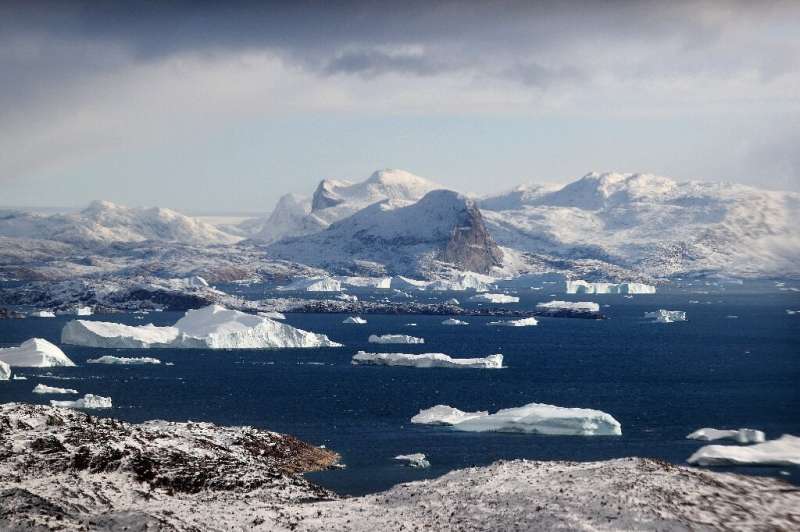
Greenland's immense ice sheet has lost enough ice in the past 20 years to submerge the entire United States in half a metre of water, according to data released this week by Danish researchers. The climate is warming faster in the Arctic than anywhere else on the planet and melting ice from Greenland is now the main factor in the rise in the Earth's oceans, according to NASA. Since measurements began in 2002, the Greenland ice sheet has lost about 4,700 billion tonnes of ice, said Polar Portal, a joint project involving several Danish Arctic research institutes.
Increased frequency of extreme ice melting in Greenland raises global flood risk Science Daily - November 2, 2021
Global warming has caused extreme ice melting events in Greenland to become more frequent and more intense over the past 40 years according to new research, raising sea levels and flood risk worldwide.
6 mysterious structures hidden beneath the Greenland ice sheet Space.com - August 29, 2021
The Greenland ice sheet hides the longest canyon in the world. Discovered in 2013, the canyon stretches 460 miles (740 kilometers) from the highest point in central Greenland to Petermann Glacier on the northwest coast. That's significantly longer than China's 308-mile-long (496 km) Yarlung Tsangpo Grand Canyon, the longest canyon on the planet that you can actually see. The canyon plunges up to 2,600 feet (800 m) deep in places and is 6 miles (10 km) wide. For comparison, the Grand Canyon in Arizona averages about 1 mile (1.6 km) deep and 10 miles (16 km) across. Parts of the canyon may route meltwater from beneath the ice sheet to the sea. It probably formed before the ice sheet and was once the channel for a mighty river. The canyon isn't the only rugged part of Greenland's under-ice landscape. Decades of mapping the island by ice-penetrating radar (which is usually mounted on airplanes) have revealed rugged mountain ranges and plunging fjords beneath the ice sheet.
Greenland melting likely increased by bacteria in sediment PhysOrg - January 14, 2021
Bacteria are likely triggering greater melting on the Greenland ice sheet, possibly increasing the island's contribution to sea-level rise, according to Rutgers scientists. That's because the microbes cause sunlight-absorbing sediment to clump together and accumulate in the meltwater streams.
Towering ice arches in the Arctic are melting, putting 'Last Ice Area' at risk of vanishing Live Science - January 12, 2021
The world's thickest and oldest sea ice is at risk of being lost as the towering ice arches holding it in place experience rapid melting, twice as fast as the rest of the Arctic. The stretch of multiyear sea ice between the Canadian Arctic Archipelago and Greenland - which can stay frozen for more than one melt season - is known as the "Last Ice Area" by scientists. Like all sea ice, it grows and shrinks with the seasons, but has so far lasted through even the warmest summers on record and was expected to endure warming temperatures longer than anywhere else in the Arctic.
Ancient Lake Discovered Under Greenland May Be Millions of Years Old, Scientists Say Science Alert - November 11, 2020

The remains of a giant, ancient lake have been discovered under Greenland, buried deep below the ice sheet in the northwest of the country and estimated to be hundreds of thousands of years old, if not millions, scientists say. The huge 'fossil lake bed' is a phenomenon the likes of which scientists haven't seen before in this part of the world, even though we know the colossal Greenland Ice Sheet (the world's second largest, after Antarctica's) remains full of mysteries hidden under its frozen lid while shedding mass at an alarming pace. Last year, scientists reported the discovery of over 50 subglacial lakes beneath the Greenland Ice Sheet: bodies of thawed liquid water trapped between bedrock and the ice sheet overhead. The new find is of a different nature: an ancient lake basin, long dry and now full of eons of sedimentary infill - loose rock measuring up to 1.2 kilometres (three-quarters of a mile) thick- and then covered by another 1.8 kilometres of ice.
Greenland ice melt is changing the shape of its coastline Live Science - October 30, 2020
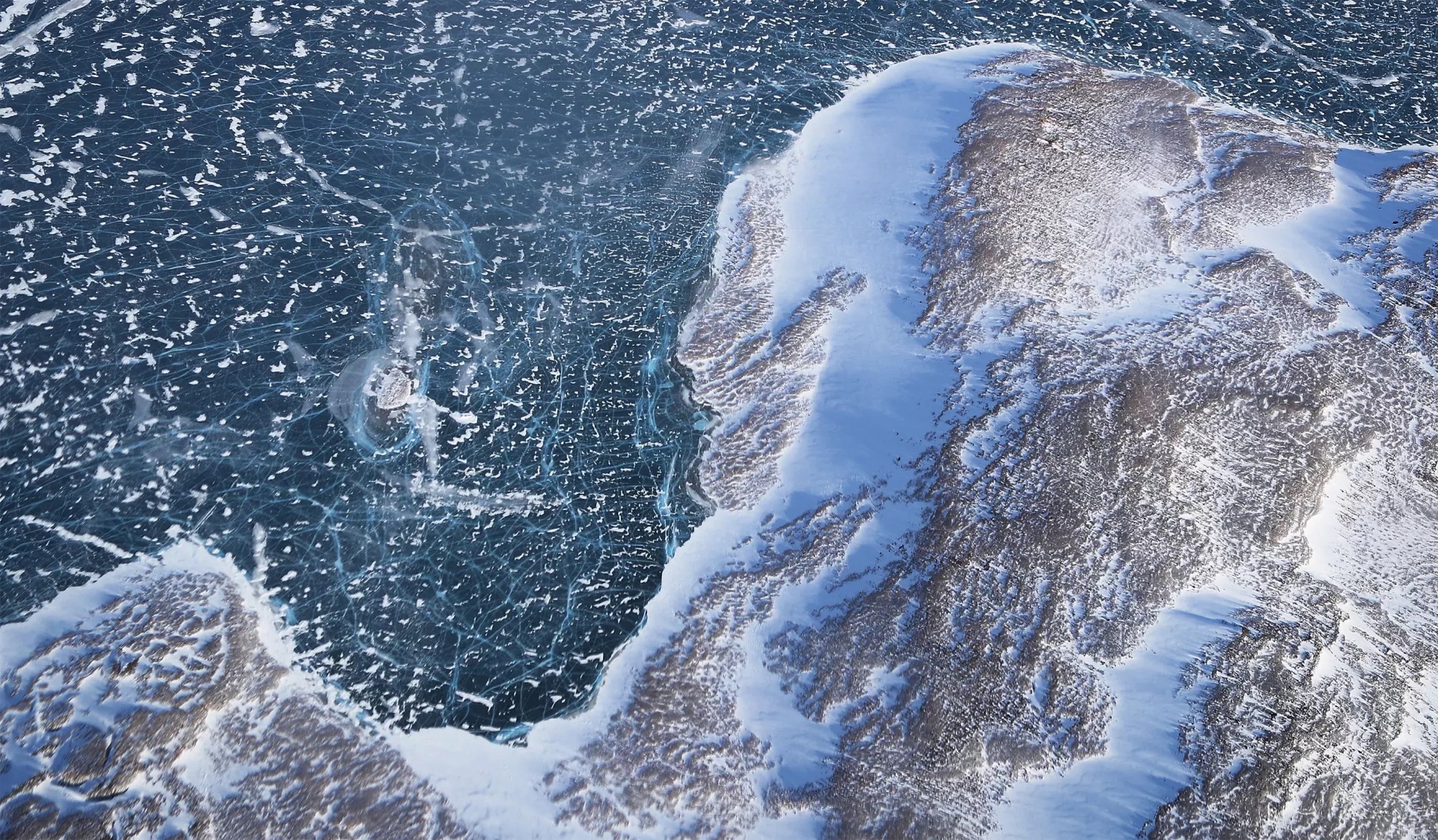
Rapid melt is reshaping coastal Greenland, potentially altering the human and animal ecosystems along the country's coast. New research finds that the ice retreat in Greenland has changed the way glaciers flow and where they dump into the sea. These changes could impact ice loss from Greenland in the future, the researchers wrote. Rapid melt is reshaping coastal Greenland, potentially altering the human and animal ecosystems along the country's coast. New research finds that the ice retreat in Greenland has changed the way glaciers flow and where they dump into the sea. These changes could impact ice loss from Greenland in the future, the researchers wrote.
'Unprecedented' ice loss as Greenland breaks record BBC - August 20, 2020
Scientists say the loss of ice in Greenland lurched forward again last year, breaking the previous record by 15%. A new analysis says that the scale of the melt was "unprecedented" in records dating back to 1948.
Greenland Is Literally Cracking Apart and Flooding the World Live Science - March 16, 2018
Visit Greenland on the right summer day, and you could see a 12-billion-gallon lake disappear before your very eyes. Glaciologists saw this happen for the first time in 2006, when a 2.2-square-mile (5.6 square kilometers) lake of melted ice drained away into nothing in less than 2 hours. Researchers now see such events as a regular part of Greenland's increasingly hot summer routine; every year, thousands of temporary lakes pop up on Greenland's surface as the surrounding ice melts, sit around for a few weeks or months, and then suddenly drain away through cracks in the ice sheet underneath. On a recent expedition, however, researchers saw an alarming new pattern behind Greenland's mysterious disappearing lakes: They're starting to drain farther and farther inland. That's because the summer lakes of Greenland drain in a "cascading" chain reaction enabled by a vast, interconnected web of cracks below the ice - and as temperatures climb, the web is getting wider.
Half a billion-year-old brains of terrifying sea monsters related to today's spiders and insects are found perfectly preserved in Greenland Daily Mail - March 16, 2018
The half a billion-year-old brains and nervous systems of 15 ancestors of modern-day spiders and insects have been found in the frozen shale of Greenland. The brains and nervous tissue belong to a type of marine predator known as Kerygmachela kierkegaardi which existed around 521 and 514 million years ago. These sea monsters are believed to have had two long appendages on their head, 11 swimming flaps and a skinny tail to help them hunt their prey. Unlike the human brain, which has three segments, the fossilized brains of these predators only had a single segment.
Secret World of Primeval Rivers Lies Beneath Greenland Glacier Live Science - July 5, 2016

A network of ancient rivers lies frozen in time beneath one of Greenland's largest glaciers, new research reveals. The subglacial river network, which threads through much of Greenland's landmass and looks, from above, like the tiny nerve fibers radiating from a brain cell, may have influenced the fast-moving Jakobshavn Isbrae glacier over the past few million years. The channels seem to be instrumental in controlling the location and form of the Jakobshavn ice stream - and seem to show a clear influence on the onset of fast flow in this region.
'Jellyroll' Ice Sculptures Discovered Under Greenland Ice Sheet Live Science - June 17, 2014

The Greenland ice sheet may look like a vast expanse of white, but scientists peering beneath the smooth veil have found a fun house of sorts, full of giant jellyroll-like ice sculptures that could rival city skyscrapers in height and the whole of Manhattan in width.